The pursuit to understand the fundamental nature of the universe has been a long-standing endeavor of human civilization. Modern physics, through the lens of string theory, advises that the universe’s basic constituents are not point-like particles but rather one-dimensional “strings” that vibrate at different frequencies. This theory tries to unify the four fundamental forces of nature—electromagnetic, strong nuclear, weak nuclear, and gravitational forces—into a single framework. Interestingly, ancient Vedic literature, particularly the Śatapatha Brāhmaṇa, and shlok 66 of yakṣa praśna from Van Parva of Epic Mahābhārata offers a similar conception, wherein the universe is interconnected through a “string” (Vāyu), which permeates everything. This article explores the convergence of modern string theory and ancient Vedic wisdom, highlighting the parallels and offering insights into how ancient knowledge systems may enlighten contemporary scientific thought.
Keywords :
String theory, Vedic knowledge, Interconnectedness, Fundamental forces, Science and spirituality
Introduction:
The quest to unify the four basic forces of nature—gravity, electromagnetism, weak nuclear force, and strong nuclear force—has been a long-standing goal in theoretical physics. These forces control how matter and energy behave at their most basic levels, affecting the behavior of particles and the structure of the universe. Successfully uniting these forces could provide deeper insights into the nature of the universe and its core principles. String theory, which proposes that the fundamental components of the universe are tiny, vibrating strings rather than particles, offers a potential solution to this significant challenge.
The Four Fundamental Forces of Nature
- Electromagnetic Force
The electromagnetic force governs the interaction between electrically charged particles. It is responsible for the behavior of charged particles in electric and magnetic fields, and it plays a crucial role in a wide range of phenomena—from the structure of atoms to the propagation of light. The photon is the force carrier for the electromagnetic force, and the theory that describes this interaction is Quantum Electrodynamics (QED).
- Strong Nuclear Force
The strong nuclear force is responsible for binding quarks together to form protons, neutrons, and ultimately, atomic nuclei. Without this force, the nuclear nucleus would not hold together, and matter as we know it could not exist. The strong force operates at incredibly short distances—on the order of 10^-15 meters—and is mediated by particles called gluons. Quantum Chromodynamics (QCD) is the theory that describes how quarks and gluons interact via the strong force.
- Weak Nuclear Force
The weak nuclear force is responsible for processes like radioactive decay and nuclear fusion, which occur inside stars. Unlike the strong and electromagnetic forces, the weak force can change the flavor of quarks, making it critical to the process of particle transformations. The W and Z bosons are the force carriers for the weak nuclear force. The weak force, though much weaker than the strong force, plays a significant role in the universe’s evolution, including phenomena like beta decay and the fusion reactions in stars.
- Gravitational Force
Gravity is perhaps the most familiar of the four fundamental forces, as it governs the attraction between objects with mass. However, it is by far the weakest of the forces on a quantum level, yet it dominates on cosmic scales. General Relativity, formulated by Einstein, is the theory that describes how mass and energy warp space-time, leading to the force of gravity. Despite its immense importance in understanding the large-scale structure of the universe, gravity remains resistant to integration into the quantum framework that governs the other three forces.
The Challenge of Unification: The Standard Model and Gravity
The Standard Model of particle physics successfully describes three of the four fundamental forces—electromagnetic, strong, and weak forces—under a single quantum mechanical framework. The Standard Model unifies the weak and electromagnetic forces into the electroweak interaction at high energies, and Quantum Chromodynamics (QCD) describes the strong force.
Despite its successes, the Standard Model does not include gravity. The mathematical framework that describes the quantum world (i.e., quantum mechanics) and the theory that governs the macroscopic world (i.e., General Relativity) are based on fundamentally different principles. While the Standard Model operates under quantum mechanics, General Relativity treats gravity as the curvature of space-time, not as a force mediated by particles. This makes integrating gravity into the Standard Model one of the most significant challenges in modern theoretical physics.
String Theory as a Solution for Unification
String theory emerged as a candidate for unifying all four forces, including gravity, into a single framework. Instead of treating particles as point-like objects, string theory suggests that they are one-dimensional objects—strings—that can vibrate at different frequencies. The type of vibration determines the properties of the particle, including its mass, charge, and the force it mediates. For instance, a string vibrating in one mode might represent an electron, while another mode of vibration might represent a quark.
The critical aspect of string theory is that it naturally includes a quantum theory of gravity. In this framework, the graviton, the hypothetical quantum particle that mediates gravitational interactions, arises as a specific vibrational mode of the string. This gives string theory the potential to integrate gravity with the other forces, something that previous attempts at unification have failed to achieve.
String theory also introduces additional spatial dimensions beyond the familiar three. According to the theory, the universe may have up to 11 dimensions (in the case of M-theory), with most of these dimensions being compactified or “curled up” at extremely small scales, which is why they are not directly observable. These extra dimensions allow for the mathematical consistency of the theory and play a crucial role in unifying the forces.
Types of String Theories
There are several versions of string theory, each proposing different kinds of strings or different ways the strings vibrate. Some of the key forms of string theory include:
- Type I String Theory: Involves both open and closed strings.
- Type IIA and Type IIB String Theories: Focus exclusively on closed strings.
- Heterotic String Theory: Combines features of different types of string theories.
These theories were initially thought to be distinct but were later shown to be different limits of a more fundamental theory known as M-theory. M-theory is an 11-dimensional theory that subsumes all string theories, providing a broader framework for understanding the universe’s fundamental structure.
The Role of Supersymmetry
Another crucial component of string theory is supersymmetry (SUSY), a theoretical symmetry that postulates every particle has a corresponding “superpartner.” For example, the electron would have a superpartner called the “selectron,” and the photon would have a superpartner called the “photino.” Supersymmetry helps resolve certain mathematical inconsistencies in string theory and predicts new particles that could be discovered in future experiments. Although no superpartners have been directly observed so far, ongoing experiments like those conducted at the Large Hadron Collider (LHC) continue to search for evidence of supersymmetry.
The Promise and Challenges of String Theory
String theory’s promise lies in its potential to provide a “Theory of Everything” (ToE), which would unify all the fundamental forces of nature into a single, coherent framework. If successful, string theory could bridge the gap between quantum mechanics and general relativity, offering new insights into the early moments of the universe, black holes, and the fundamental nature of space-time itself.
However, string theory also faces significant challenges:
- Lack of Experimental Evidence: Currently, string theory exists primarily as a mathematical framework. There is little direct experimental evidence for the existence of strings or the extra dimensions the theory predicts.
- Complexity: String theory’s mathematical complexity is immense, making it difficult to test or verify through experiments. The energy scales at which strings are thought to exist are far beyond the reach of current technology, meaning it may be a long time before we can directly probe the theory’s predictions.
- Multiplicity of Solutions: String theory has an enormous number of possible solutions (vacua), known as the “string landscape.” This multiplicity of solutions makes it challenging to determine which one corresponds to our universe, leading to debates about whether the theory is truly predictive.
Despite its challenges, string theory remains one of the most promising approaches to unifying the four fundamental forces of nature. Its potential to reconcile the seemingly incompatible frameworks of quantum mechanics and general relativity places it at the forefront of theoretical physics. Should string theory be validated through experimental discoveries, it could revolutionize our understanding of the universe and provide a profound new way of thinking about space, time, and matter.
In the meantime, string theory continues to inspire new directions in research, including efforts to understand quantum gravity, black holes, and the early universe’s structure. It also resonates with ancient philosophical ideas, suggesting that the universe is connected through a fundamental principle that permeates all of existence—a notion echoed in ancient Vedic texts and now explored in the cutting-edge realm of modern physics.
Vedic Knowledge and String Theory
The concept of the universe being interconnected by an underlying, all-pervasive entity has intrigued philosophers, scientists, and scholars for centuries. In modern physics, string theory presents a similar notion, proposing that the universe’s most fundamental constituents are not particles, but vibrating strings that form the fabric of space and time. Interestingly, ancient Vedic scriptures, particularly the Vedas and Mahabharat, present comparable ideas, especially through the concept of Vāyu, which is described as an all-pervading principle. This section delves deeper into these parallels, analyzing the profound connection between ancient Vedic wisdom and contemporary scientific thought.
The Vedic Concept of Vāyu
In Vedic literature, Vāyu is often translated as “wind” or “air.” However, this translation oversimplifies its deeper philosophical meaning. The Nirukta, an ancient treatise on the etymology and meaning of Vedic words by Yaska, provides a more nuanced definition of Vāyu:
“यत् सर्वं व्याप्तं तत् वायु:” yat sarvaṃ vyāptaṃ tat vāyu:
Translation: “That which pervades everything is Vāyu.”
This definition highlights that Vāyu is not merely a physical entity like wind or gas but rather a subtle, metaphysical principle that permeates the entire cosmos. Vedic thought posits that Vāyu is the fundamental force or element that sustains the universe, ensuring harmony and balance among all things. It is not restricted to air or atmosphere but instead acts as a universal force that connects all aspects of existence, from the macrocosmic (planets, stars) to the microcosmic (atoms, particles).
Satapatha brāhmaṇa and the Universal String
The Satapatha brāhmaṇa, part of the Vedic corpus, is a highly regarded text for its ritualistic and philosophical content. In Satapatha brāhmaṇa 6.1.3.1, we find a reference to a universal string-like connection:
“सूर्याचन्द्रमसौ धर्मेण वायुना सर्वमिदं व्याप्तं भवति।” sūryācandramasau dharmeṇa vāyunā sarvamidaṃ vyāptaṃ bhavati
Translation: “The sun, the moon, and the entire universe are permeated by Vāyu, by the principle of Dharma (order).”
This verse emphasizes the interconnectedness of the universe through Vāyu, suggesting that the sun, moon, and all cosmic entities are bound by an unseen yet omnipresent force. The term Dharma in this context refers to the cosmic order or the natural law that governs the functioning of the universe, upheld by Vāyu.
In another incident in Mahabharata, Vana Parva, Yudhistir answered the question of Yaksh mentioning the creation is all pervading Vāyu.
Vāyu and the Pervading Principle in Vedic Philosophy
In Vedic philosophy, the universe is considered a manifestation of Brahma, the ultimate reality or consciousness. Vāyu, as defined by the Vedas, functions as an extension of Brahman, facilitating the connection between the physical and metaphysical realms. The concept of Prāṇa (vital life force) in the Upanishads, often used interchangeably with Vāyu, also reflects this idea. Prāṇa is understood to be the energy that moves and sustains life, resonating with how Vāyu pervades and governs the cosmic and biological order.
Modern String Theory: A Conceptual Parallel
String theory emerged in modern physics as an attempt to resolve several problems in unifying the four fundamental forces—gravity, electromagnetism, the strong nuclear force, and the weak nuclear force. It introduces the idea that the universe’s fundamental building blocks are not zero-dimensional particles but one-dimensional strings that vibrate at different frequencies. Each vibration corresponds to a different type of particle, much like musical notes emerging from a string instrument.
Strings are envisioned to be the fundamental constituents of both matter and energy. They are omnipresent, existing at every point in space and forming the structure of the universe at the smallest scales. In string theory, everything from the smallest subatomic particles to the largest cosmic structures emerges from the same fundamental vibrating strings, much like the Vedic idea that Vāyu pervades and sustains everything in the universe.
Cosmic Connections: The Role of Strings and Vāyu
The idea of interconnectedness is central to both Vedic philosophy and string theory. In the Vedic perspective, Vāyu acts as the medium through which the universe is sustained and interconnected. It ensures the balance between the cosmic entities, maintaining Dharma or the natural order. Similarly, in string theory, the universe is seen as a single, unified entity where everything is connected by the fundamental strings that vibrate and form the fabric of reality.
In both cases, the invisible “string” that connects and unites all entities—be it physical objects, forces, or consciousness—is fundamental to understanding the nature of existence. The Vedic concept of Vāyu and Prāṇa as all-pervading, life-sustaining forces mirrors the concept of strings in string theory that form the underlying structure of all matter and forces. This all-pervading principle that connects the smallest particles (quarks and leptons) to the largest cosmic bodies (stars and galaxies) is a profound parallel.
Extra Dimensions and the Vedic Cosmos
In string theory, the universe is thought to consist of additional spatial dimensions—up to 11 in the case of M-theory. Most of these dimensions are “compactified,” meaning they are curled up in such a way that we do not perceive them in our daily experience. However, they are crucial for the consistency of the mathematical framework of string theory.
In Vedic cosmology, the concept of the Lokas (worlds or realms) offers a similar idea of multiple dimensions of existence. The Lokas are different planes of existence, from the physical to the subtle, with each Loka corresponding to a different level of reality. Much like the hidden dimensions in string theory, these Lokas exist simultaneously and are interconnected, though they are not always directly perceivable in the physical sense.
Analysis of Parallels
- Underlying Unity: Both Vedic philosophy and string theory propose that the universe, at its most fundamental level, is a unified whole. In string theory, this unity is represented by the vibrating strings that underlie all matter and forces, while in the Vedic texts, it is represented by Vāyu or Prāṇa, which pervades everything.
- Vibration and Frequency: In string theory, the properties of particles (such as mass, charge, and type) arise from the vibrational modes of strings. This idea resonates with the Vedic concept that the universe and all life forms are connected through vibrations or energy frequencies, as represented by Prāṇa or Vāyu.
- Omnipresence and Pervasiveness: Both Vāyu in the Vedic texts and strings in string theory are omnipresent. Vāyu pervades all of existence, governing cosmic order (Dharma), while strings form the underlying fabric of reality, present at every point in space and time.
- Cosmic Order: The Vedic concept of Dharma, maintained by Vāyu, parallels the role of strings in maintaining the order of the universe in string theory. Just as Vāyu sustains the balance between cosmic entities, the fundamental strings in string theory ensure the consistency and unification of forces and matter.
- Multidimensionality: The idea of multiple, unseen dimensions in string theory mirrors the Vedic concept of Lokas, which are different planes of existence. Both frameworks acknowledge that the universe consists of more than what is directly observable in our three-dimensional experience.
A Unified Vision of the Cosmos
The parallels between ancient Vedic knowledge and modern string theory offer a profound insight into the timeless quest for understanding the nature of the universe. While string theory provides a mathematical and physical framework for unifying the fundamental forces of nature, Vedic philosophy provides a metaphysical and spiritual context that emphasizes the interconnectedness and unity of all things.
The convergence of these ideas from two seemingly different knowledge systems—one rooted in ancient spirituality and the other in cutting-edge physics—suggests that the fundamental truths about the universe may transcend the boundaries of science and spirituality. Both approaches point towards a holistic understanding of existence, where the universe is not a collection of isolated entities but a single, interconnected whole governed by a universal principle—be it Vāyu or vibrating strings.
By recognizing these parallels, we not only gain a deeper appreciation of the ancient wisdom embedded in the Vedas but also open new avenues for exploring the universe through the lens of both science and philosophy. The idea that everything is interconnected through a subtle, all-pervading principle is as relevant today in the world of quantum physics as it was in the spiritual traditions of the ancient Vedic seers.
Conclusion:
The convergence of modern string theory and ancient Vedic knowledge indeed highlights the universality of the quest to unravel the universe’s mysteries. On one hand, string theory provides a sophisticated, mathematical approach to unifying the four fundamental forces of nature, offering insights into the universe’s physical structure. On the other, Vedic literature, with its emphasis on Vayu as an all-pervading force, presents a philosophical and spiritual framework that aligns with these scientific discoveries.
This synthesis shows that science and spirituality, rather than being opposing forces, can complement one another in exploring the deepest truths of existence. Both perspectives emphasize the interconnectedness of all things, whether through the vibrations of cosmic strings or the omnipresence of Vayu. Together, they point towards a holistic view of the cosmos, suggesting that modern scientific endeavors may be rediscovering principles that ancient Vedic Rishis perceived thousands of years ago. By bridging these two realms, we absolutely could move closer to a more unified understanding of reality—one that embraces both the material and metaphysical dimensions of the universe.
References:
- Śatapatha Brāhmaṇa, Sixth Kāṇḍa, 1st Adhyāya, 3rd Brāhmaṇa.
- Nirukta of Yaska, Chapter 1, Verse 1.
- Brahmacari, Dr. Srivas Krishna Das. (2024). Exploring the Cosmic Symphony: Harmonizing Brain Waves and Planetary Frequencies. Available at SSRN.
- Greene, B. (1999). The Elegant Universe: Superstrings, Hidden Dimensions, and the Quest for the Ultimate Theory. W.W. Norton & Company.
- Brahmacari, Srivas Krishna Das. Understanding the Space Time Continuum-As revealed in Vedic literature: A Comprehensive study on the Theory of Relativity-As revealed in Vedic literature. JF Inc.
- Green, M. B., Schwarz, J. H., & Witten, E., Superstring Theory: Volume 1 – Introduction, 1987, Cambridge University Press
Views: 255
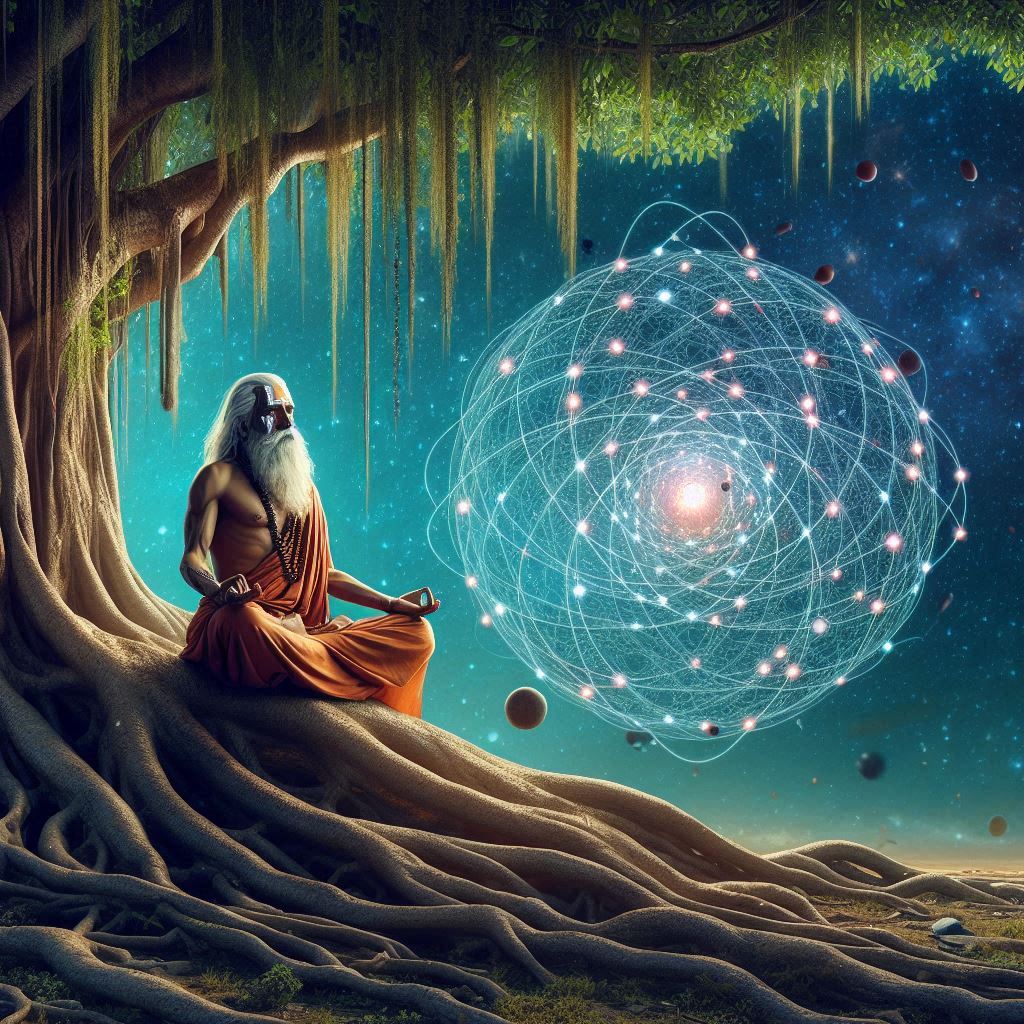
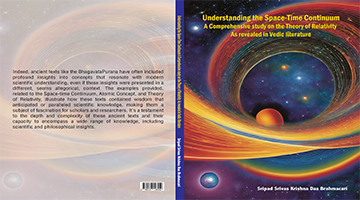
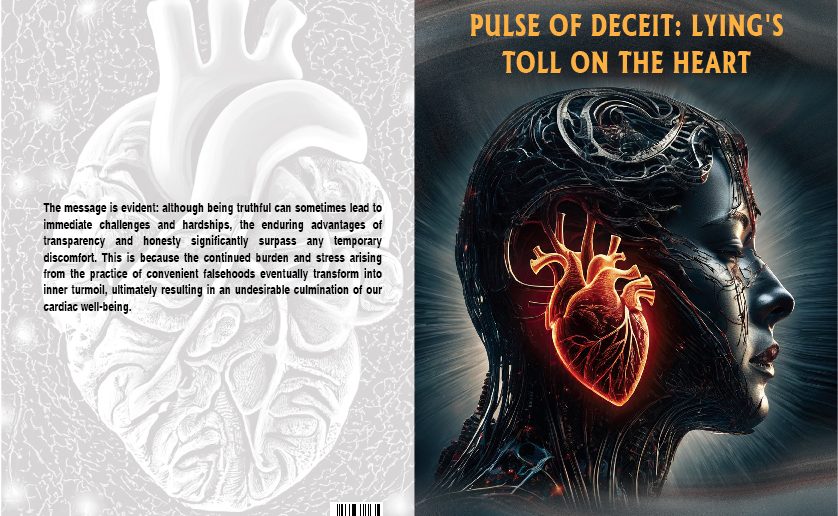
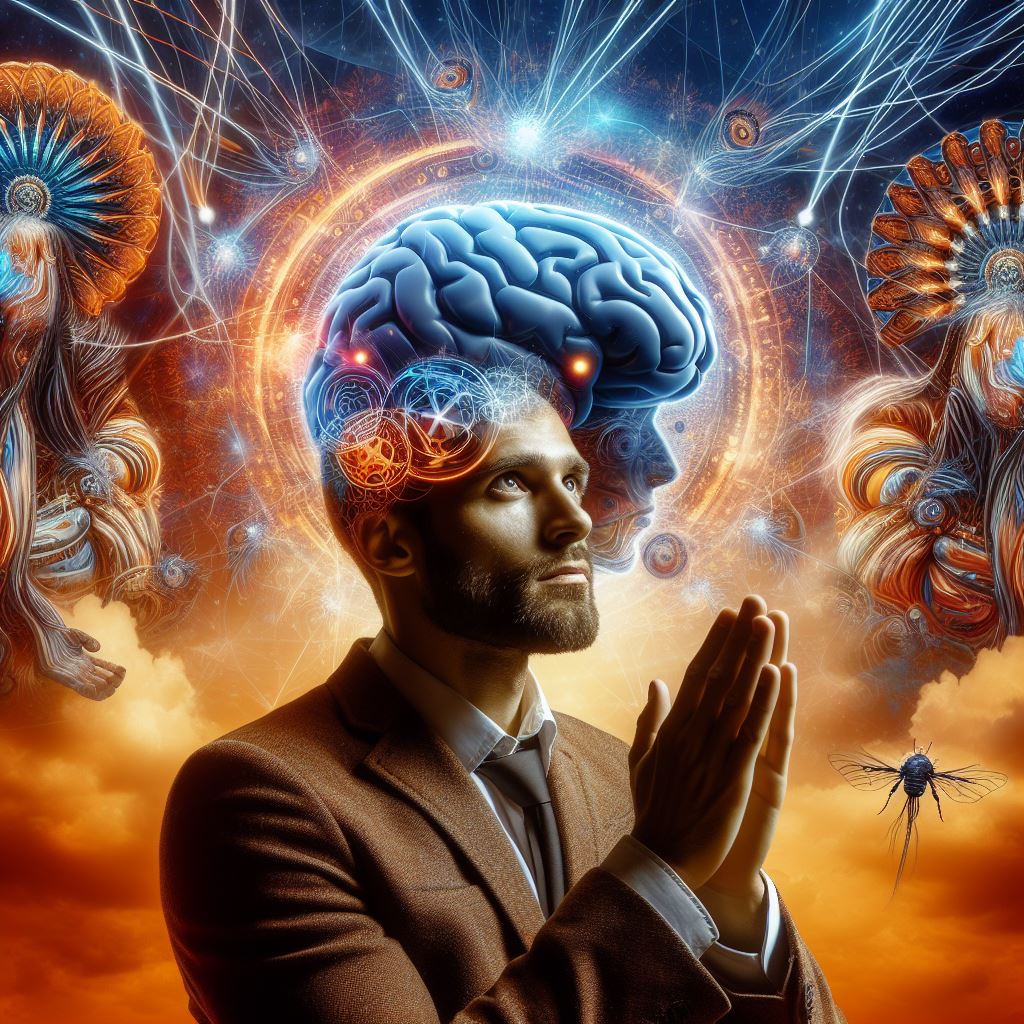





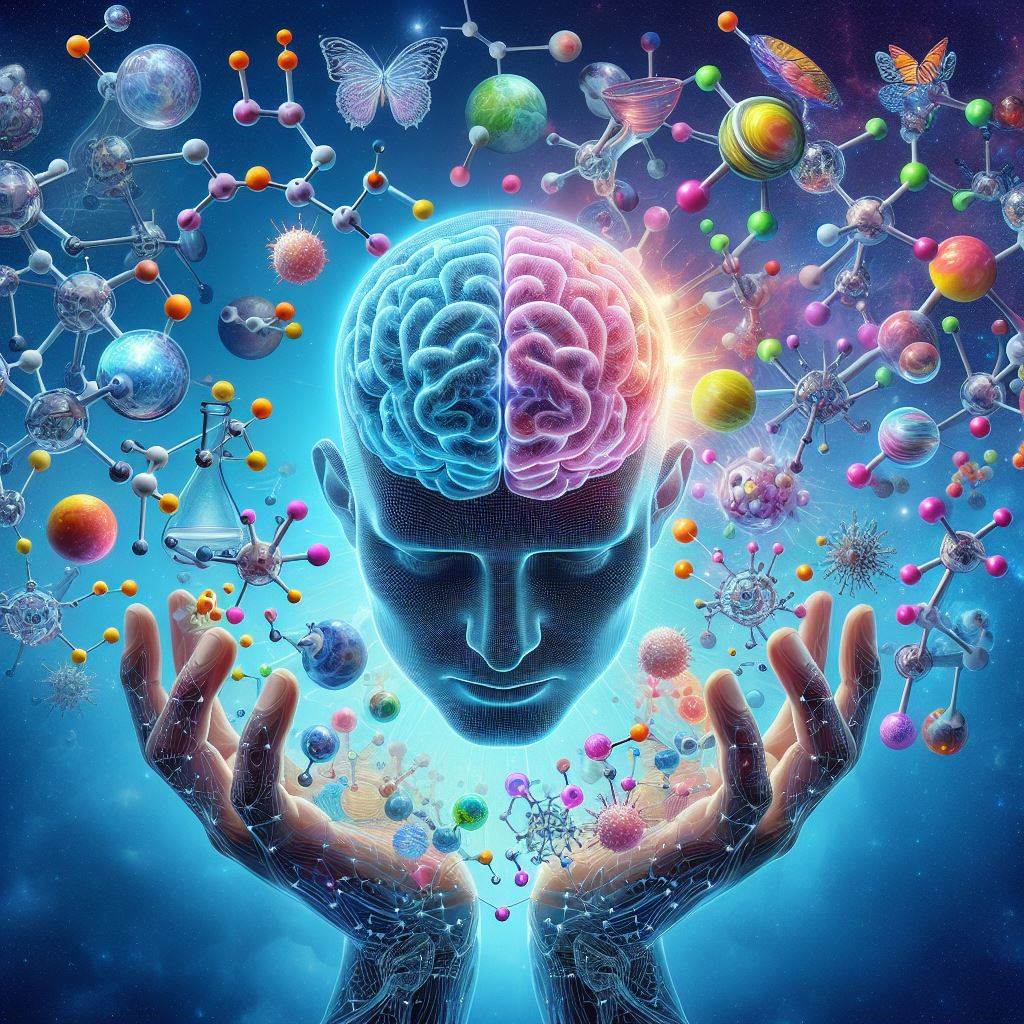




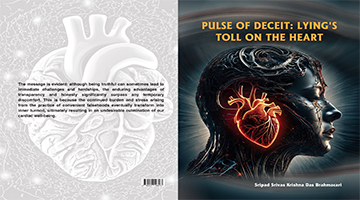

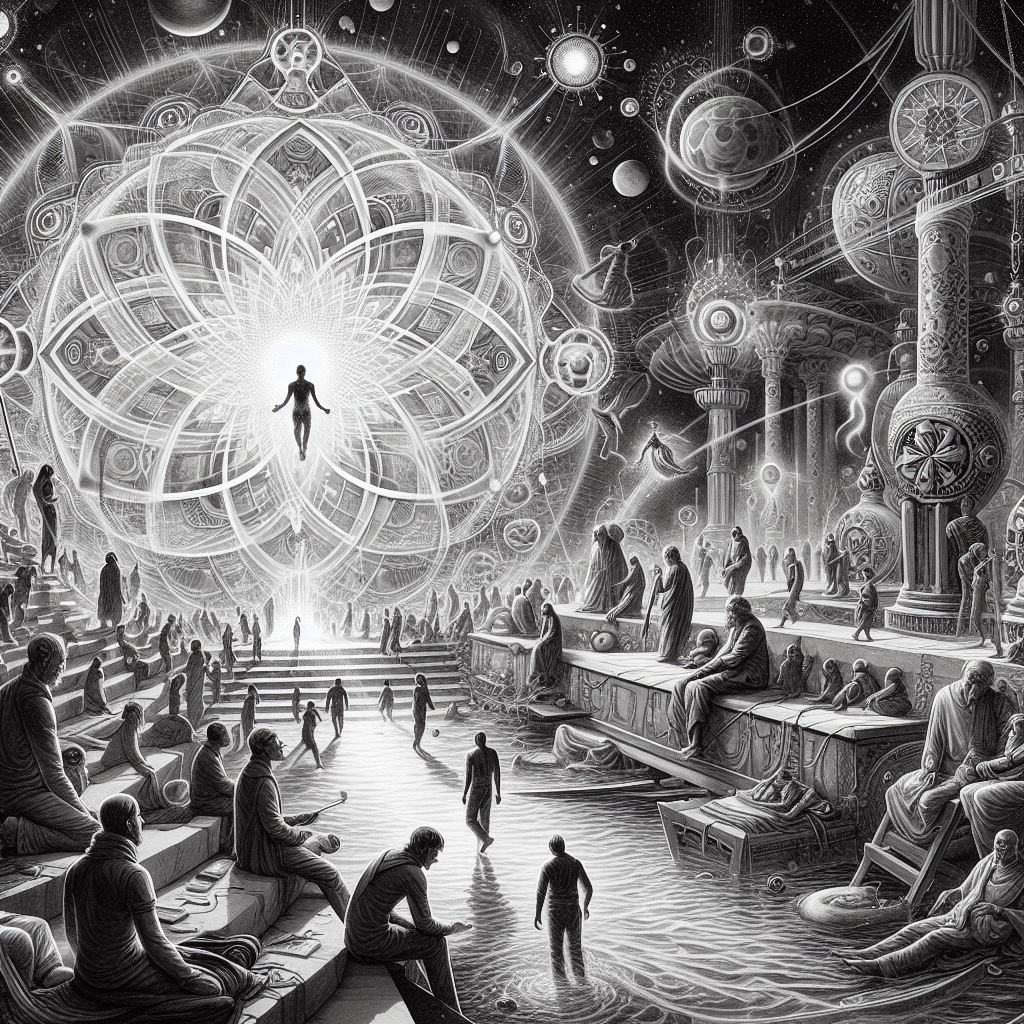
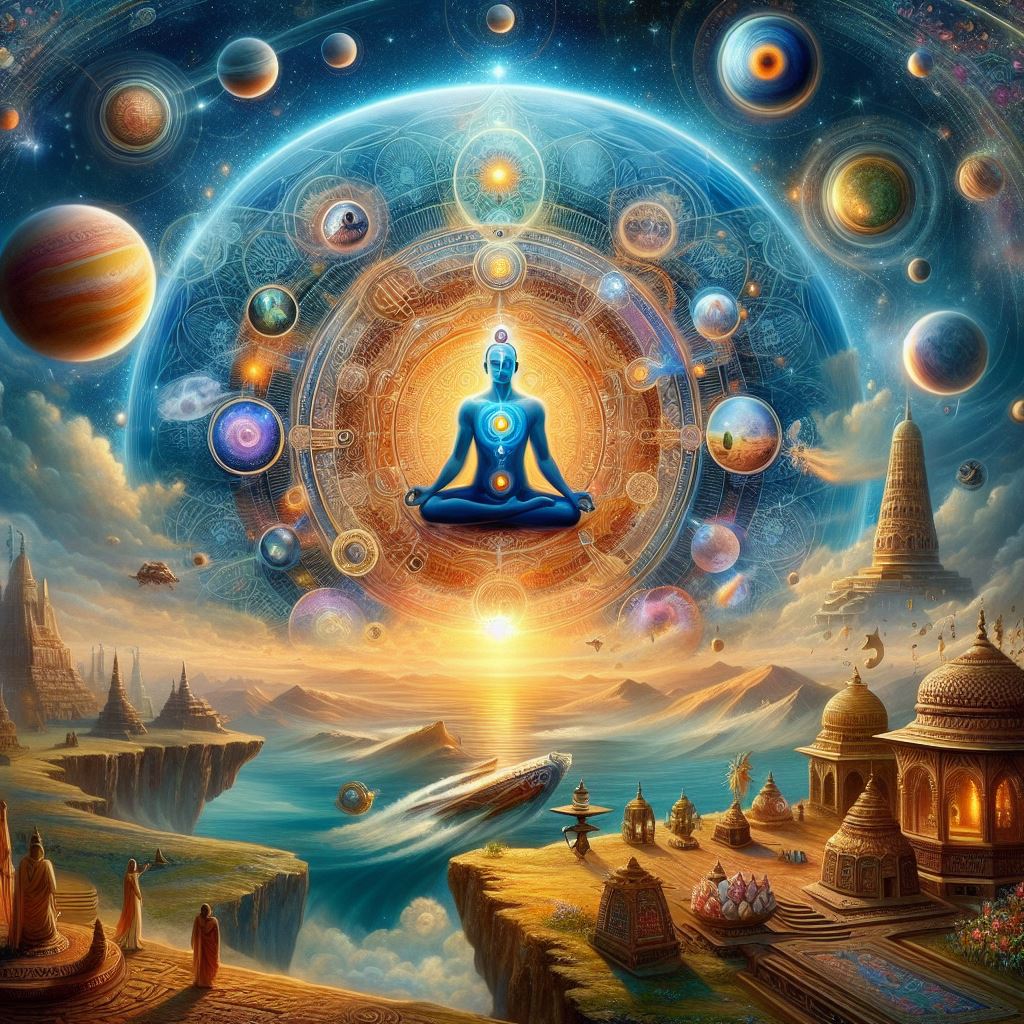
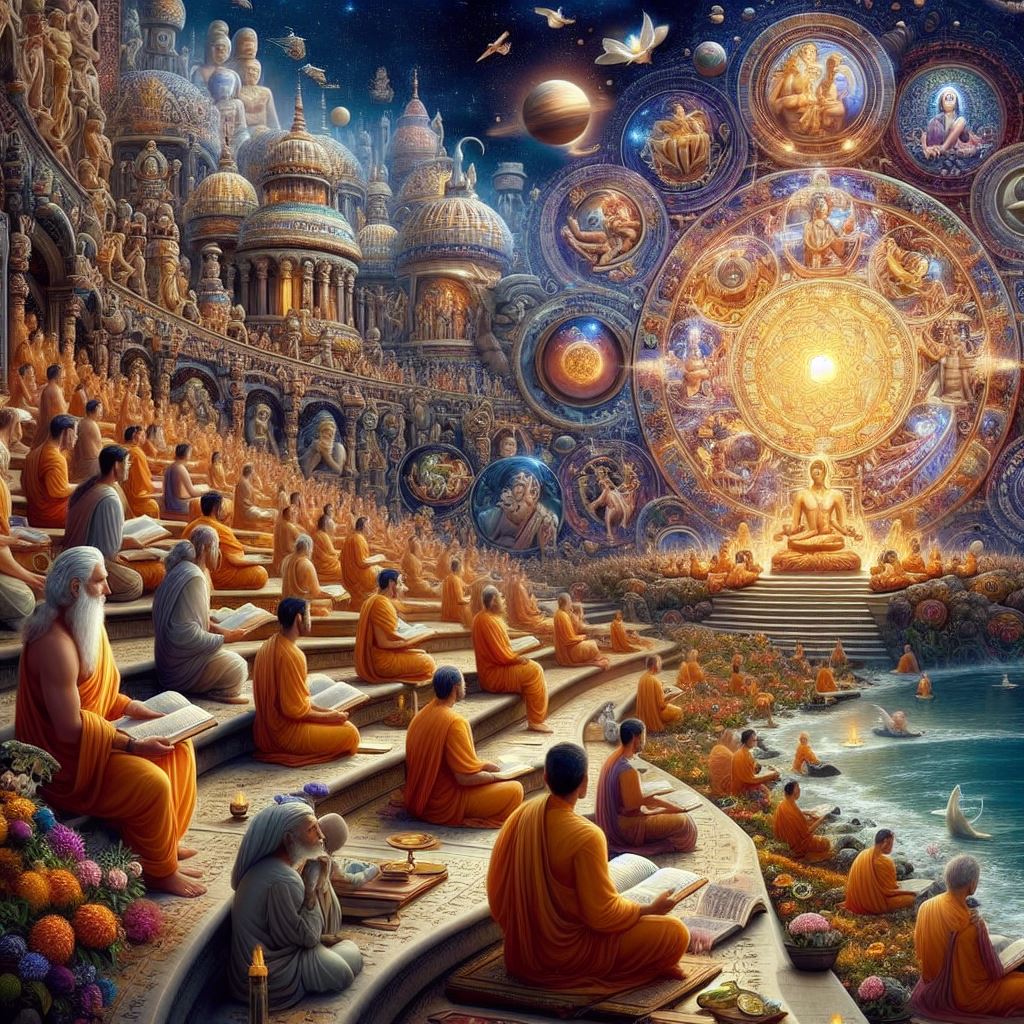


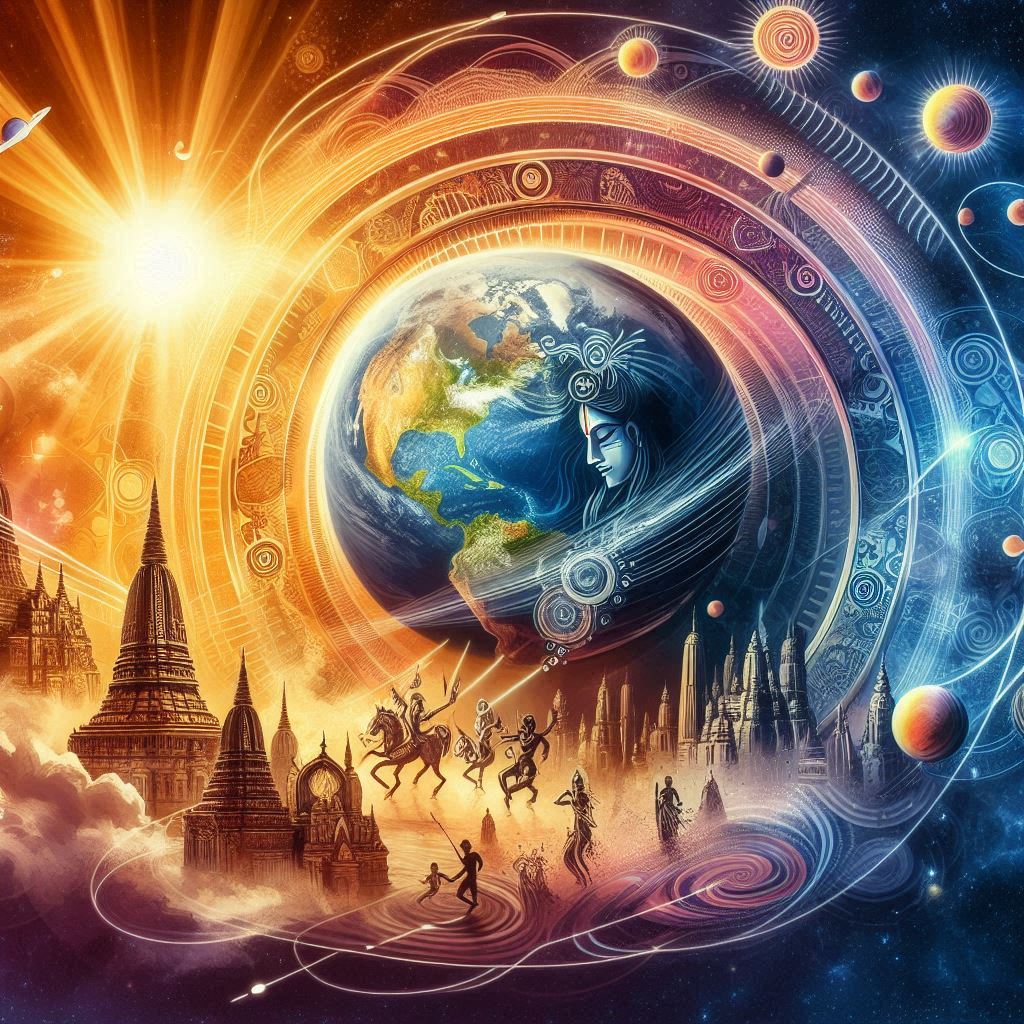
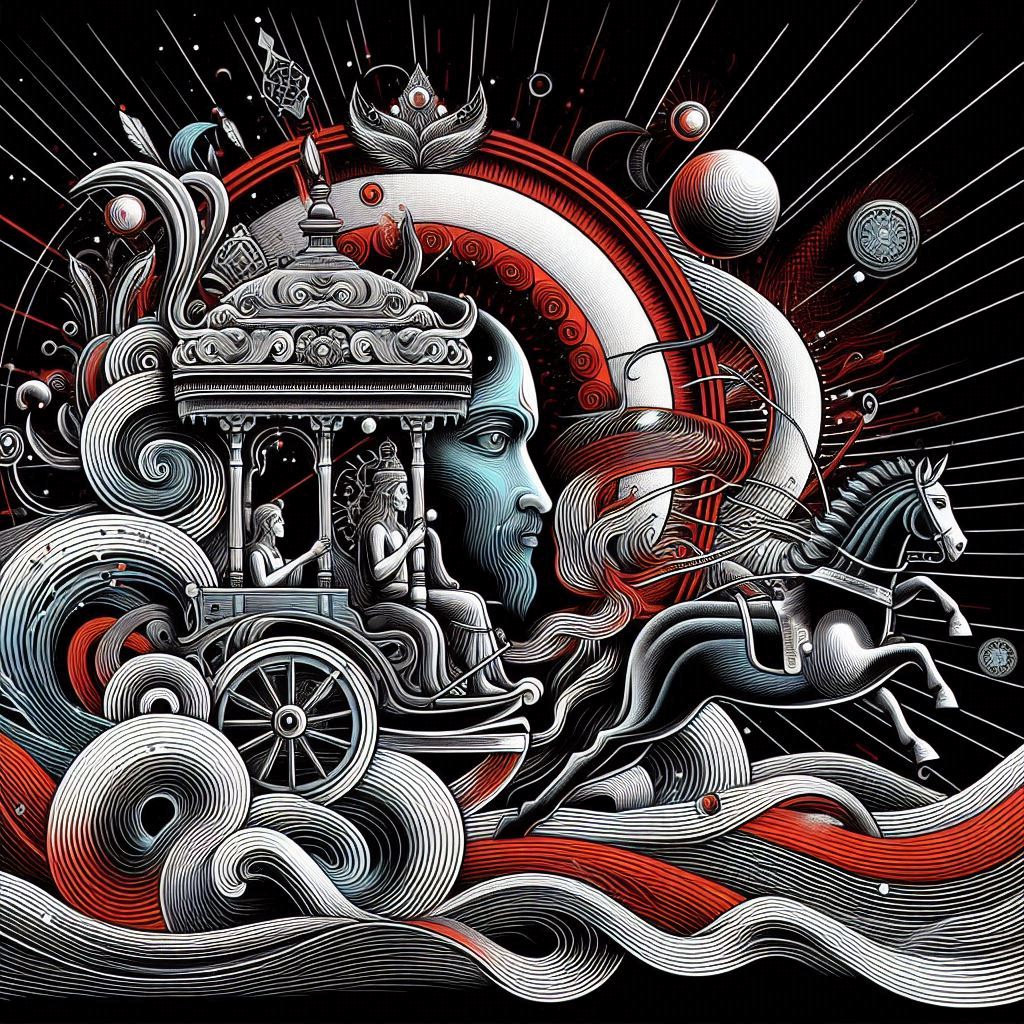
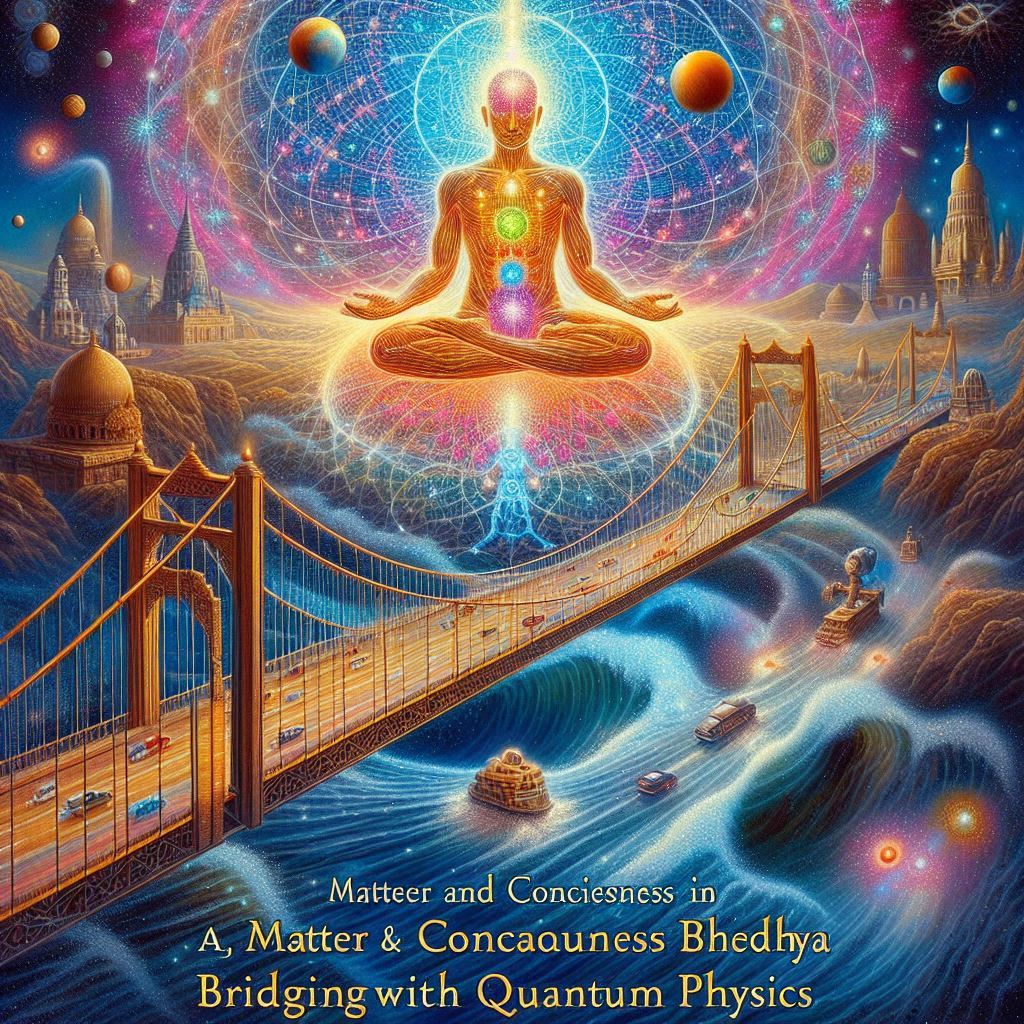
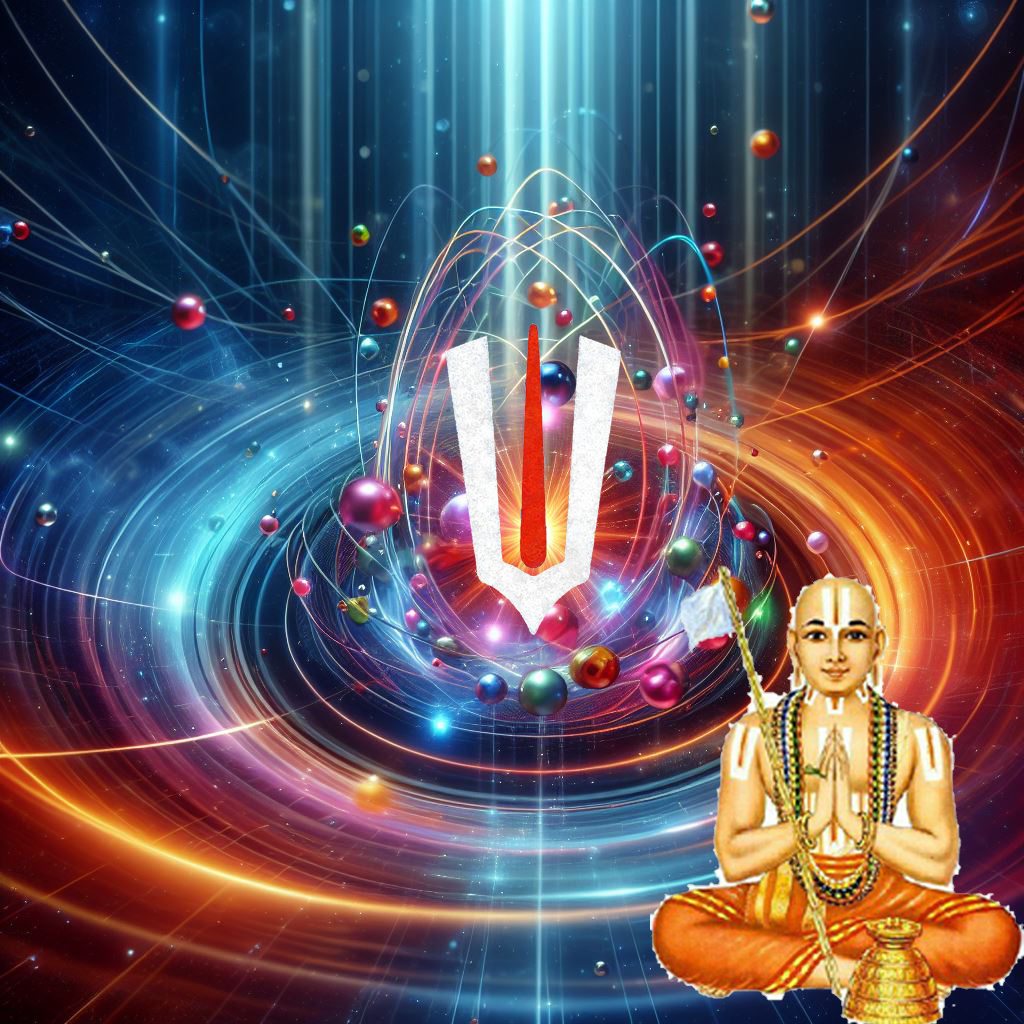
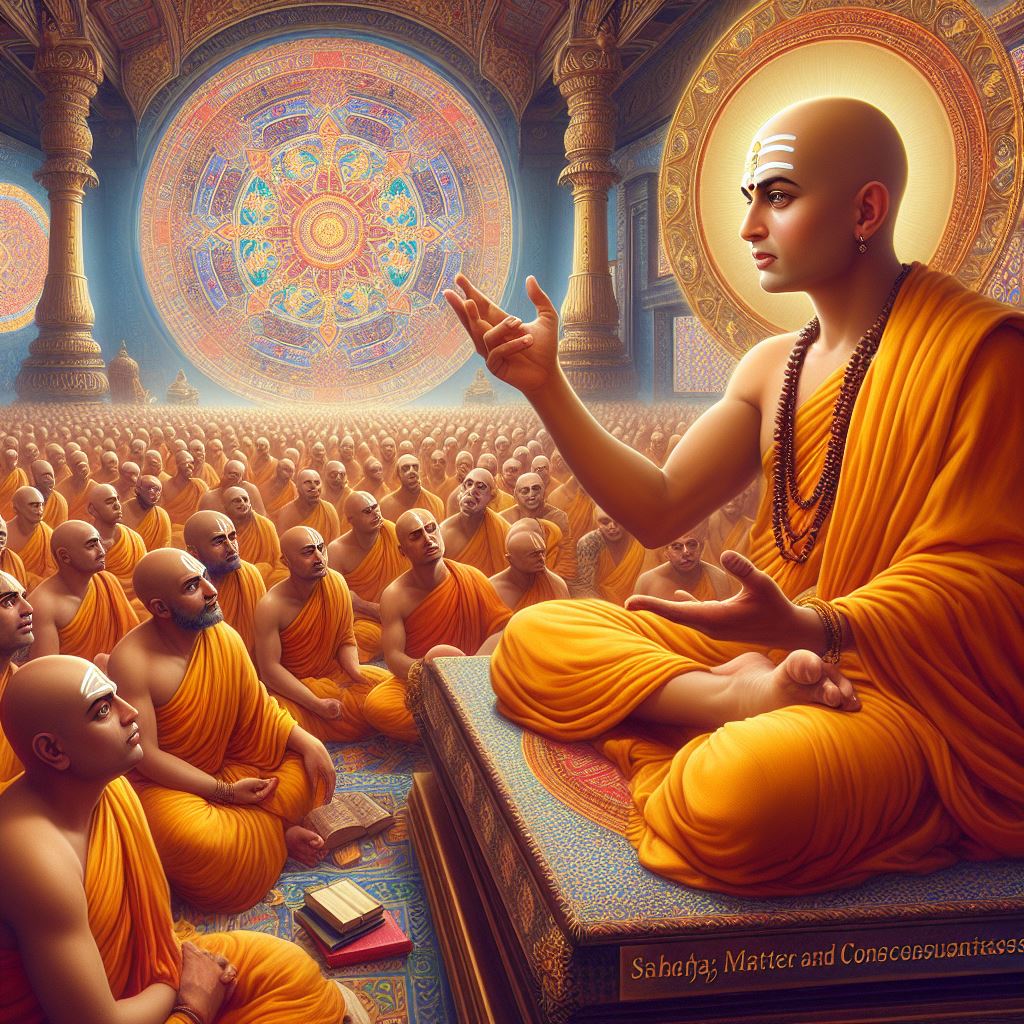
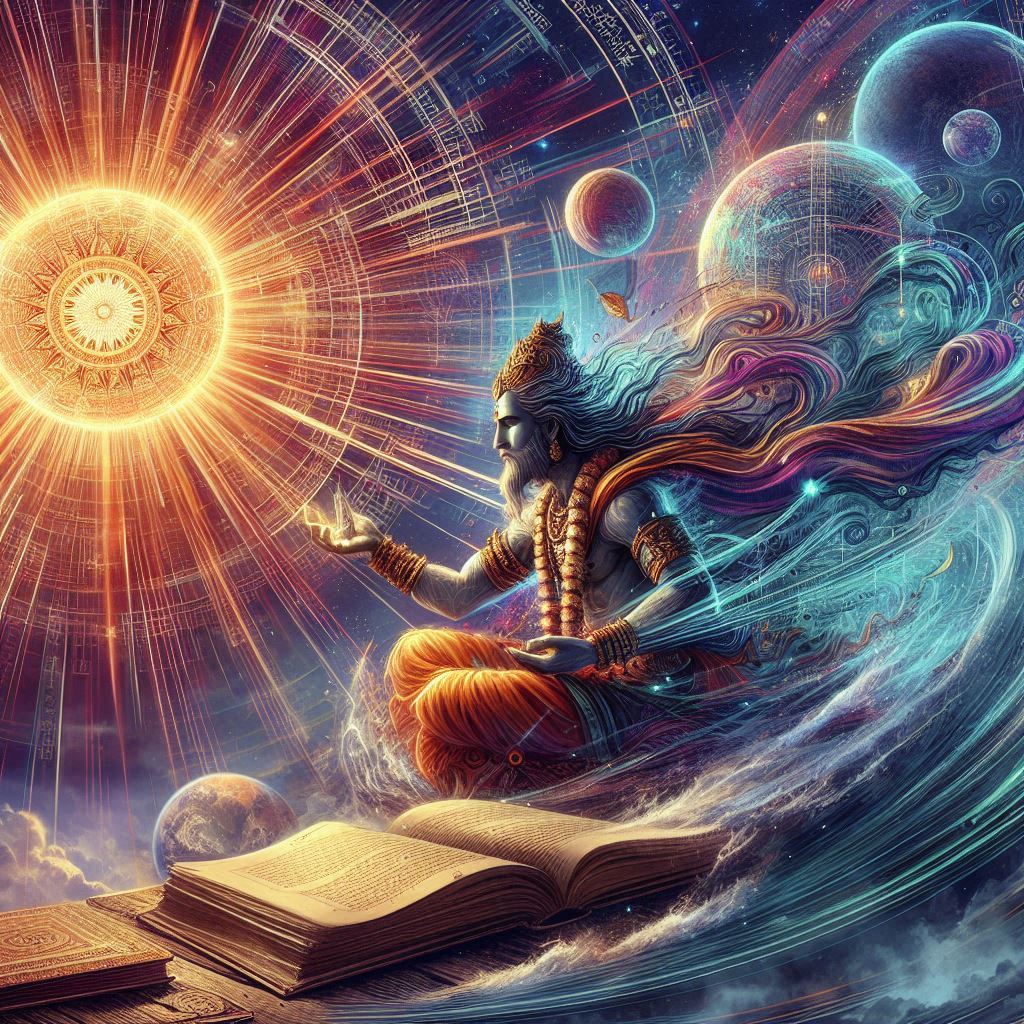
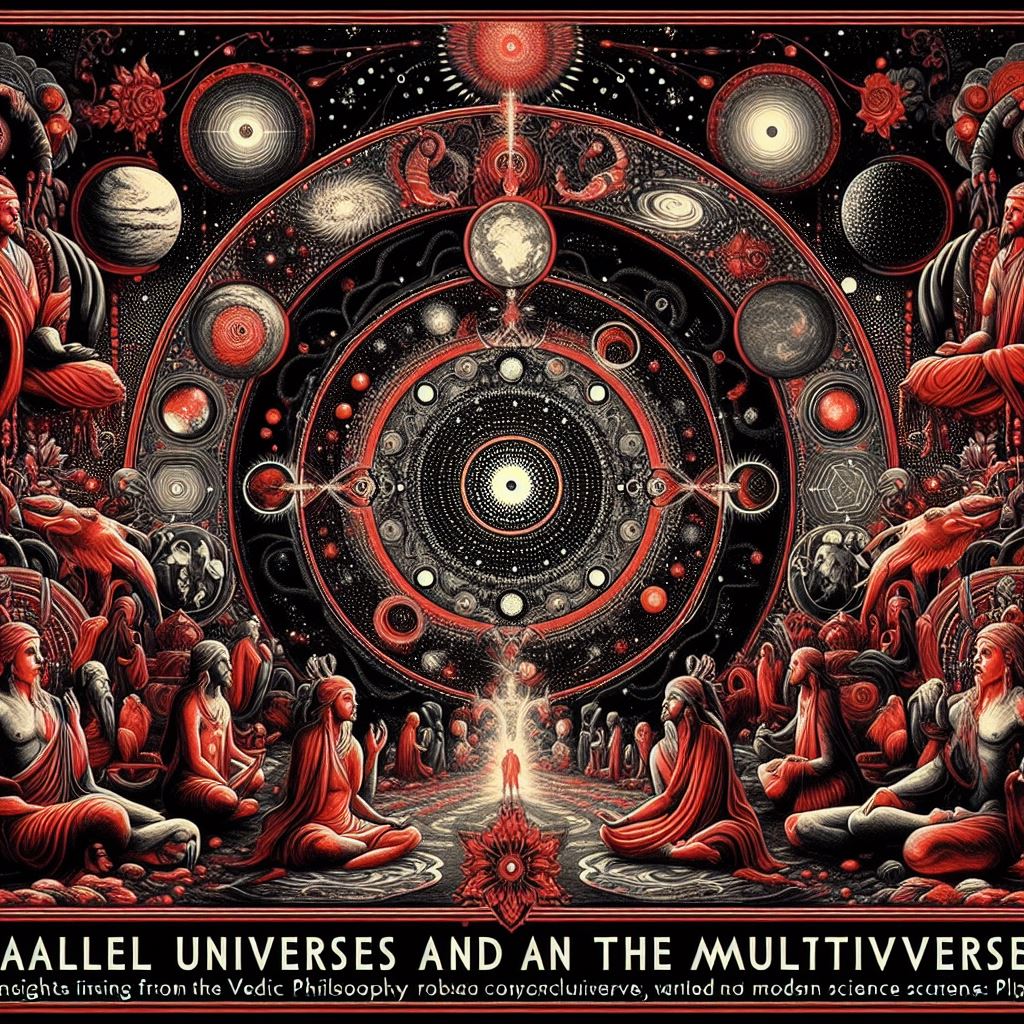
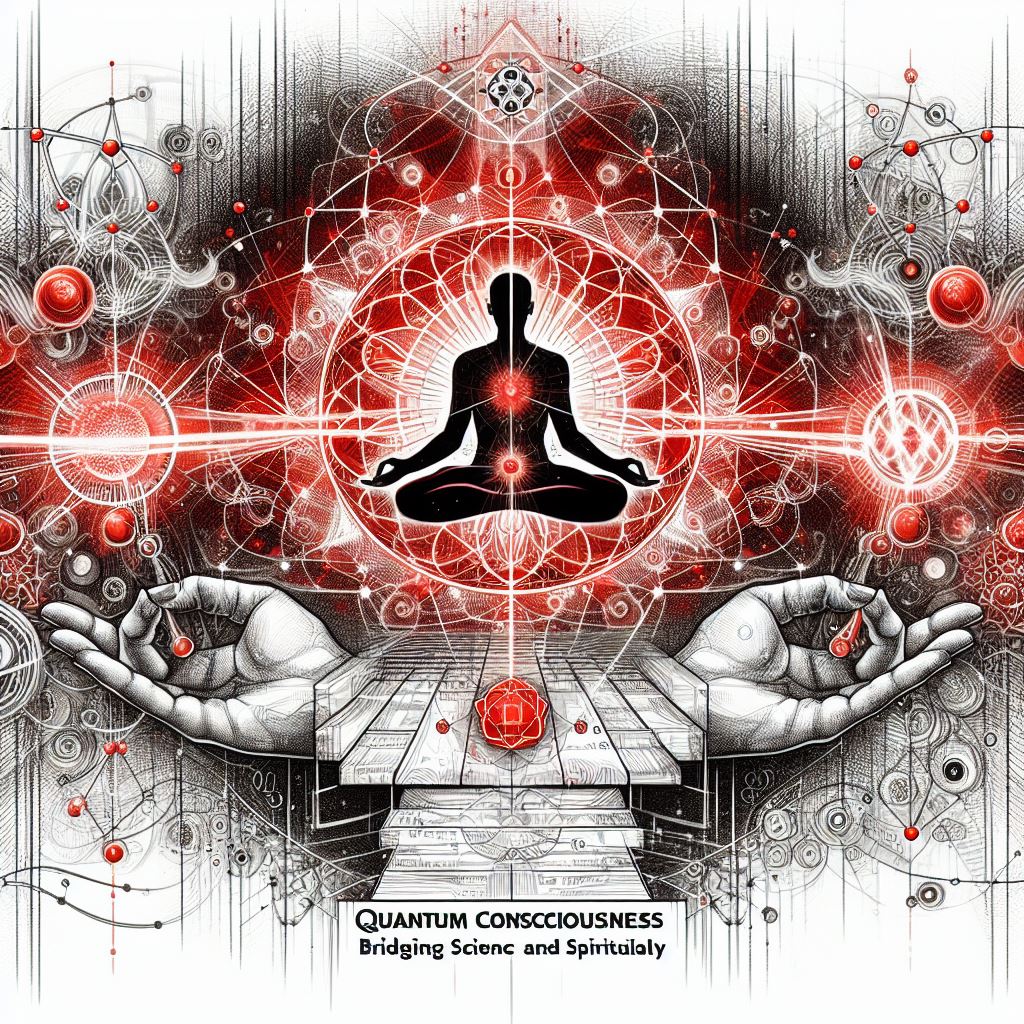
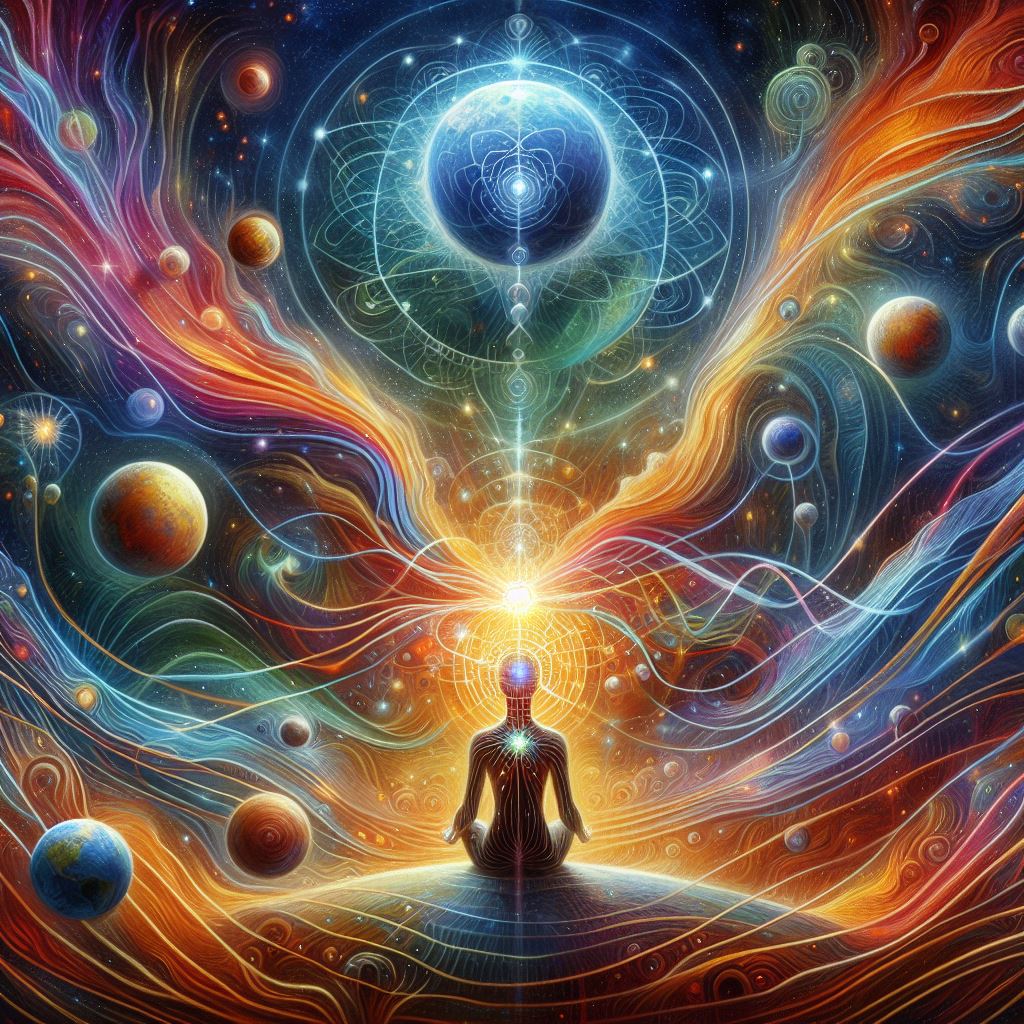

Origin of Science
Temporal Relativity in Vedic Literature: An Interdisciplinary Analysis of Time Dilation Narratives
Acharya Kaṇāda: The Ancient Sage Who Discovered the Atom
Evidence of Vedic Sanātana Hinduism as a Global Dharma
Perception of Quantum Gravity and Field Theory in the Vedas
Sanskrit’s Role in Advancing AI: A Comprehensive Study
The Vedic Model of the Mind: A Contemporary Exploration
Vedic Contributions to Geometry: Unveiling the Origins of Mathematics
Matter and Consciousness in Achintya Bhedābheda: Bridging with Quantum Physics
A Comprehensive Study of Aeroplanes and Aviation in Vedic Literature
Hydrology and the Water Cycle in Vedic Scriptures
Vedic Insights on the Speed of Light
Mysteries of Photosynthesis in Vedic Scriptures: A Journey through Ancient Wisdom